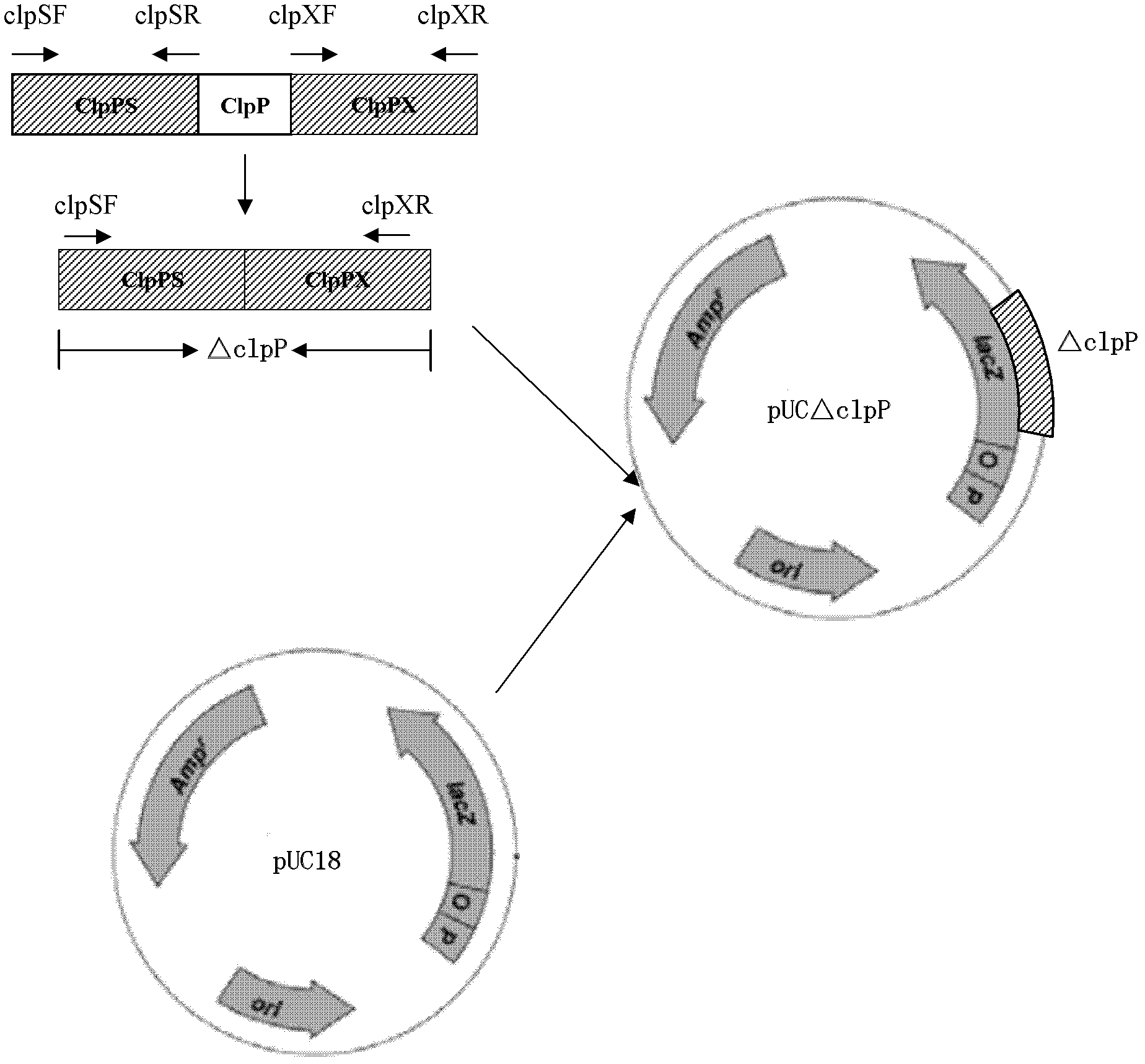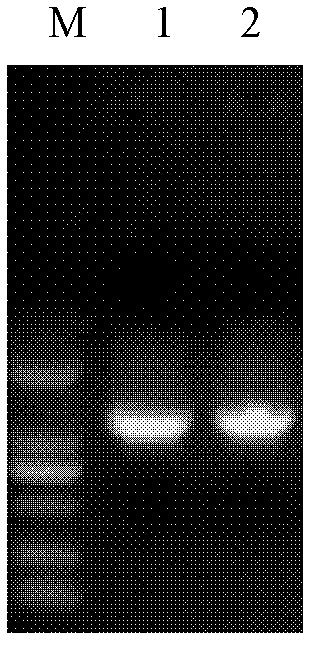Porcine actinobacillus pleuropeumoniae ClpP protease gene-deleted strain containing no resistance marker, construction method thereof, and application thereof
A technology of porcine pleuropneumoniae and Actinobacillus, which is applied in the field of bacterial genetic engineering, can solve problems such as affecting the formation of biofilm, decreased viability, weakened virulence, etc., and achieves the effect of broad market application prospects.
- Summary
- Abstract
- Description
- Claims
- Application Information
AI Technical Summary
Problems solved by technology
Method used
Image
Examples
Embodiment 1
[0043] Example 1 Construction of recombinant suicide vector pUCΔclpP
[0044] 1.1 Primer design and PCR amplification of the upper and lower homology arms of the ClpP protease gene
[0045] According to the reported sequence of APP-7 AP76 strain (refer to the gene sequence of GenBank accession number CP001091.1), two pairs of primers were designed to amplify the upper homology arm ClpPS and the lower homology arm ClpPX of the clpP gene respectively, and the size of the amplified fragment was For 1200bp and 1249bp respectively, an EcoR I restriction site was designed at the 5' end of the upstream primer of the upper homology arm, and a BamH I restriction site was designed at the 5' end of the downstream primer of the lower homology arm. The above primers were synthesized by Beijing Huada Gene Company. The flow chart of the construction of Actinobacillus pleuropneumoniae recombinant suicide plasmid pUCΔclpP is as follows figure 1 shown.
[0046] The primer sequences for ampl...
Embodiment 2
[0057] Example 2 Construction of APP Serum Type 7 clpP Gene Deletion Mutant
[0058] The constructed recombinant suicide plasmid pUCΔclpP was electrotransformed into APP serum type 7 CVCC265, and the positive colonies of the single exchange strain were screened on a 10ug / mL Amp resistance plate, and primers were designed inside the upper and lower homology arms for PCR identification. The wild strain could An 858bp fragment can be amplified, a 367bp fragment can be amplified by the deletion strain, and a 858bp and 367bp fragment can be amplified by the single exchange strain at the same time. The results of PCR identification of the single exchange strain were as follows: Figure 5 shown. The above primers were synthesized by Beijing Huada Gene Company.
[0059] The primer sequences are as follows:
[0060] clpJDF: 5'-CGTGGTGTCGCTTGAAACTC-3'
[0061] clpJDR: 5'-AATTAGACCGTATTCCATCGC-3'
[0062] After the positive single colony of the single exchange strain was cultured an...
Embodiment 3
[0064] Example 3 Toxicity identification and immune protection experiment of APPΔclpP mutant strain
[0065] Experimental animals: SPF Balb / C female mice aged 4-6 weeks were purchased from the Experimental Animal Center of Harbin Veterinary Research Institute, Chinese Academy of Agricultural Sciences.
[0066] 3.1 Virulence identification
[0067] The mice were randomly divided into two groups, 10 in each group. The specific vaccination plan is as follows:
[0068] The first group (test group): inoculated with APPΔclpP prepared in Example 2, diluted to the concentration (CFU) listed in Table 1, and each mouse was inoculated intraperitoneally with a dose of 0.1 ml.
[0069] The second group (control group): inoculated with Actinobacillus pleuropneumoniae CVCC265, diluted to the concentration (CFU) listed in Table 1, and each mouse was inoculated with 0.1 ml of intraperitoneal dose.
[0070] The survival of the mice is shown in Table 1.
[0071] Table 1
[0072]
[0073]...
PUM
 Login to View More
Login to View More Abstract
Description
Claims
Application Information
 Login to View More
Login to View More - R&D
- Intellectual Property
- Life Sciences
- Materials
- Tech Scout
- Unparalleled Data Quality
- Higher Quality Content
- 60% Fewer Hallucinations
Browse by: Latest US Patents, China's latest patents, Technical Efficacy Thesaurus, Application Domain, Technology Topic, Popular Technical Reports.
© 2025 PatSnap. All rights reserved.Legal|Privacy policy|Modern Slavery Act Transparency Statement|Sitemap|About US| Contact US: help@patsnap.com



